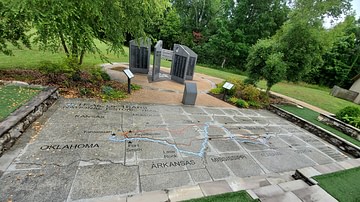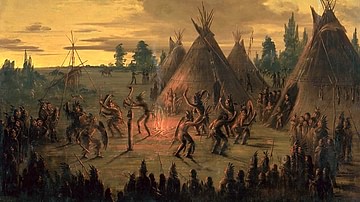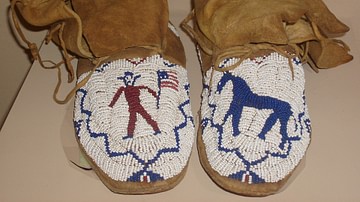The Trail of Tears was the forced relocation of the "Five Civilized Tribes" – Cherokee, Chickasaw, Choctaw, Muscogee Creek, and Seminole – from their ancestral lands in the Southeastern region of the United States to "Indian Territory" (modern-day Oklahoma) between 1831 and 1850, resulting in the deaths of over 16,000 Native Americans and the removal of over 60,000 from their homelands.
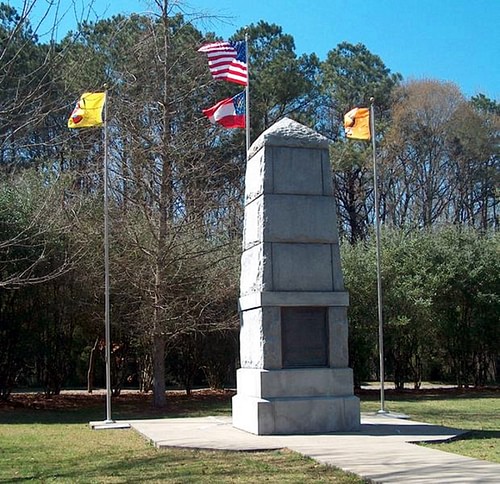
Scholar John Ehle writes, "the Trail of Tears – or, as the Indians more often said, the Trail Where They Wept – was a trail of sickness" (385). Most Native Americans died of disease, exposure, exhaustion, and starvation on the forced marches from their lands east of the Mississippi River (modern-day Alabama, Florida, Georgia, North Carolina, and Tennessee) to Indian Territory, a distance of between 1000 miles (1600 km) and over 5000 miles (8000 km), depending on where a given march began and the route taken.
The Trail of Tears was not a singular event but a series of forced relocations following the passage of the Indian Removal Act of 1830. The marches began the following year with the Choctaw nation and proceeding through 1847, ending in 1850:
- Choctaw: 1831-1836
- Seminole: 1832-1842
- Muscogee Creek: 1834-1837
- Chickasaw: 1837-1847
- Cherokee: 1836-1838
Precisely where the term "Trail of Tears" originated is debated, but it is usually attributed to a Choctaw chief who described the journey as "a trail of tears and death." Scholar Adele Nozedar comments:
The originator of this simple phrase is not known for sure, but it is believed to have been used by a Choctaw chief, Nitikechi, to describe the effects of the Indian Removal Act. The Cherokee had a similar term: "The Place Where They Cried."
(500)
Cherokee Chief John Ross (l. 1790-1866) famously opposed the removal in his Memorial and Protest of the Cherokee Nation sent to Congress in June 1836, arguing that the US government had no legal grounds for relocating his people. Although his piece focuses on the Cherokee nation, the points he makes apply equally to the others who were forcibly removed from their lands.
Although the Trail of Tears is the best-known act of forced relocation of Native Americans, it is far from the only one as citizens of many other nations of Native peoples of North America experienced the same throughout the 19th century and up to as recently as the mid-1960s to the 1970s. This event, and others like it, notably the Long Walk of the Navajo (1863-1866) are, generally, understood today as acts of genocide perpetrated by the US government.
Background to the Marches
Although the Indian Removal Act of 1830 was the immediate cause for the death marches known as the Trail of Tears, the policies informing that act date back to the 1630s, notably the Pequot War (1636-1638), which reduced the Pequot population of the region of modern-day Massachusetts from 3000 to 200 (many then sold into slavery) to open up their lands for English colonization. Among the "facts submitted to a candid world" presented by Thomas Jefferson in the Declaration of Independence of 1776 was that King George III of Great Britain (r. 1760-1820)
Has excited domestic insurrections amongst us and has endeavored to bring on the inhabitants of our frontiers the merciless Indian Savages, whose known rule of warfare is an undistinguished destruction of all ages, sexes, and conditions.
As president, in 1803, Jefferson advocated the forced removal of Native Americans west of the Mississippi River and, by 1819, citizens of Native American nations were offered 640 acres of land in Indian Territory for giving up their lands east of the Mississippi. The US government in 1819 had no authority to grant these acres to anyone, however, as they were in so-called "Indian Territory" and, as John Ross points out below, the US government had no legal right to forcibly remove Native Americans from their homelands for relocation in the west.
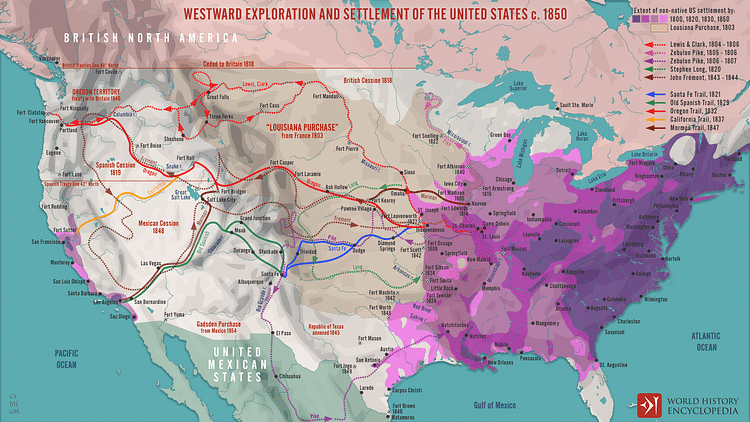
The solution to the "Indian Problem", included in the Indian Removal Act of 1830, was to buy the land from Native Americans, and then, having nowhere to live, they might be amenable to moving west on their own, which the US government promised to help them do. Although the cause of the Trail of Tears is often attributed to the Georgia Gold Rush of 1829, which brought miners into conflict with Native Americans living there, President Andrew Jackson already had Native American relocation as a priority when he took office that year.
Removal & Protest
The Indian Removal Act was passed on 28 May 1830, allowing for the negotiation of large land sales between Native American nations and the US government. The first nation to sign away their lands was the Choctaw, through the Treaty of Dancing Rabbit Creek, in September 1830. The Choctaw understood, too late, that the "assistance" offered by the US government in relocation was a forced march with inadequate provisions in bad weather and, in at least one case, led by inexperienced guides. Nozedar comments:
[The Choctaw left] on November 1, right at the beginning of what would be a very harsh winter. The question has to be asked whether this time of year was chosen deliberately by the US Government authorities. The travelers from Memphis, trudging along with their belongings because flooding made it impossible to travel by wagons, were lashed with freezing rain, sleet, snow, and high winds. It was arranged for steamboats to take the people to any river-based destinations. The group that traveled some 60 miles [96 km] up the Arkansas River found that the weather at the Arkansas Post stayed below freezing for a week, the rivers clogged with ice. There was no prospect of going anywhere; therefore, the available food had to be rationed. Each person had a daily allowance of one turnip, two cups of hot water, and a little corn. But their fate was better than the Vicksburg group: their guide had no idea of the route and lost the entire party in the swamplands of Lake Providence.
(501)
The Seminole rejected forced relocation, launching the Second Seminole War (1835-1842) with the Dade Massacre of 28 December 1835. Chief Osceola of the Seminole (l. 1804-1838) and John Horse of the Black Seminole (also known as Jean Caballao, l. c. 1812-1882) led their people in resistance to the theft of their lands but, eventually, Horse negotiated passage to Indian Territory and, once there, finding the US government was not going to honor the treaty, led his people on to Mexico.

The Muscogee Creek signed the Treaty of Cusseta in 1832 and began relocation in 1834. The problem with this treaty – as with all treaties (as Ross points out below) is that they were signed by people who had no authority to speak for the entire nation, only for their band. Those who refused to recognize the Treaty of Cusseta resisted removal, leading to the Creek War of 1836. General Winfield Scott (l. 1786-1866) put down the uprising and oversaw the Muscogee Creek removal to Indian Territory.
The Chickasaw negotiated a payment of $3 million for their lands and then waited to receive it while those lands were taken. Some compensation was made, but the full amount was not paid until 30 years later, in 1866.
In the case of the Cherokee, 20 tribal members signed the Treaty of New Echota in December 1835 ceding all Cherokee lands east of the Mississippi River to the US government. These 20, known as the Treaty Party, held a minority opinion, did not represent the interests of the whole Cherokee nation, and had no authority to give away the lands in the southeast for the promise of lands "just as good" out west or any financial compensation. Further, the Treaty of New Echota was not recognized by the Cherokee Council and was not signed by Chief John Ross.
Ross tried to convince the US Senate that the treaty was invalid because neither he nor the Council had approved it, but the Senate ratified it in March of 1836 anyway. Ross then sent his Memorial and Protest of the Cherokee Nation to the US Congress, but this was also ignored, and the forced relocation of the Cherokee, the nation most closely associated with the Trail of Tears, began that same year.
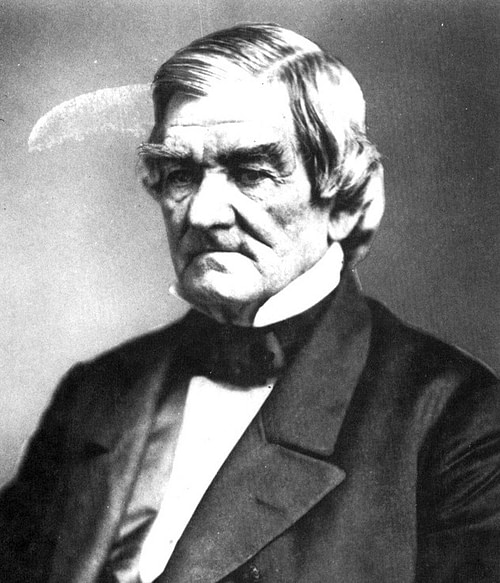
Although writers, scholars, and historians of the 19th and 20th centuries defended the Indian Removal Act of 1830 as an honest effort to provide Native Americans with their own lands, far from encroachment by White settlers, most scholars today recognize it as an act of genocide and ethnic cleansing, as is the Long Walk of the Navajo and Apache, forced marches of relocation between 1863 and 1866, often referred to as the "Navajo Trail of Tears."
Text
The following text is taken from the Digital Public Library of America: An excerpt from "Memorial and Protest of the Cherokee Nation" written by John Ross and sent to the US Congress on June 21, 1836:
To The Honorable the Senate and House of Representatives of the United States of North America, in Congress assembled:
The undersigned representatives of the Cherokee nation, east of the river Mississippi, impelled by duty, would respectfully submit, for the consideration of your honorable body, the following statement of facts:
It will be seen, from the numerous subsisting treaties between the Cherokee nation and the United States, that from the earliest existence of the Government, the United States, in Congress assembled, received the Cherokees and their nation into favor and protection; and that the chiefs and warriors, for themselves and all parts of the Cherokee nation, acknowledged themselves and the said Cherokee nation to be under the protection of the United States of America, and of no other sovereign whatsoever; they also stipulated, that the said Cherokee nation will not hold any treaty with any foreign power, individual state, or with individuals of any State: that for, and in consideration of, valuable concessions made by the Cherokee nation, the United States solemnly guaranteed to said nation all their lands not ceded, and pledged the faith of the Government, that "all white people who have intruded, or may hereafter intrude, on the lands reserved for the Cherokees, shall be removed by the United States, and proceeded against, according to the provisions of the act, passed 30th March 1802", entitled, "An Act to Regulate trade and Intercourse with the Indian Tribes and to preserve peace on the frontiers."
It would be useless to recapitulate the numerous provisions for the security and protection of the rights of the Cherokees, to be found in the various treaties between their nation and the United States. The Cherokees were happy and prosperous under a scrupulous observance of treaty stipulations by the Government of the United States, and from the fostering hand extended over them, they made rapid advances in civilization, morals, and in the arts and sciences. Little did they anticipate, that when taught to think and feel as the American citizen, and to have with him a common interest, they were to be despoiled by their guardian, to become strangers and wanderers in the land of their fathers, forced to return to the savage life, and to seek a new home in the wilds of the far west, and that without their consent.
An instrument purporting to be a treaty with the Cherokee people, that has recently been made public by the President of the United States, will have such an operation, if carried into effect. This instrument, the delegation avers before the civilized world, and in the presence of Almighty God, is fraudulent, false upon its face, made by unauthorized individuals, without sanction, and against the wishes, of the great body of the Cherokee people.
Upwards of fifteen thousand of those people have protested against it, solemnly declaring they will never acquiesce. The delegation would respectfully call the attention of your honorable body to their memorial and protest, with the accompanying documents, submitted to the Senate of the United States, on the subject of the alleged treaty, which are herewith transmitted.
If it be said that the Cherokee have lost their national character and political existence, as a nation or tribe, by State legislation, then the President and Senate can make no treaty with them; but, if they have not, then no treaty can be made for them, binding, without and against their will. Such is the fact, in reference to the instrument entered into at New Echota, in December last. If treaties are to be thus made and enforced, deceptive to the Indians and to the world, purporting to be a contract, when, in truth, wanting the assent of one of the pretended parties, what security would there be for any nation or tribe to retain confidence in the United States?
If interest or policy require that the Cherokee be removed, without their consent, from their lands, surely the President and Senate have no constitutional power to accomplish that object. They cannot do it under the power to make treaties, which are contracts, not rules prescribed by a superior, and therefore binding only by the assent of the parties. In the present instance, the assent of the Cherokee nation has not been given, but expressly denied.
The President and Senate cannot do it under the power to regulate commerce with the Indian tribes, or intercourse with them, because that belongs to Congress, and so declared by the President, in his message to the Senate of February 22, 1831, relative to the execution of the act to regulate trade and intercourse with the Indian tribes, passed 30th of March 1802. They cannot do it under any subsisting treaty stipulation with the Cherokee nation. Nor does the peculiar situation of the Cherokee, in reference to the States, their necessities and distresses, confer any power upon the President and Senate to alienate their legal rights, or to prescribe the manner and time of their removal.
Without a decision of what ought to be done, under existing circumstances, the question recurs, is the instrument under consideration a contract between the United States and the Cherokee nation? It so purports upon its face, and that falsely. Is that statement so sacred and conclusive that the Cherokee people cannot be heard to deny the fact? They have denied it under their own signatures, as the documents herein before referred to will show, and protested against the acts of the unauthorized few, who have arrogated to themselves the right to speak for the nation. The Cherokee have said they will not be bound thereby. The documents submitted to the Senate show, that when the vote was taken upon considering the propositions of the commissioner, there were but seventy-nine for so doing.
Then it comes to this: could this small number of persons attending the New Echota meeting, acting in their individual capacity, dispose of the rights and interests of the Cherokee nation, or by any instrument they might sign, confer such power upon the President and Senate.
If the United States are to act as the guardian of the Cherokee, and to treat them as incapable of managing their own affairs, and blind to their true interests, yet this would not furnish power or authority to the President and Senate, as the treaty making power to prescribe the rule for managing their affairs. It may afford a pretense for the legislation of Congress, but none for the ratification of an instrument as a treaty made by a small faction against the protest of the Cherokee people.
